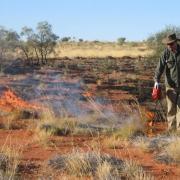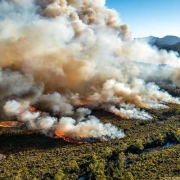Controlled Backburning or Raging Bushfires: Finding a balance.
It started off as being called the worst fires that Australia had seen in 30 years, now it’s turned into something no one has ever seen before.
Reports coming in show the scale of destruction that has been left in the wake of these fires. Hundreds of thousands of homes destroyed, some saying the figure stands at at-least 1300 homes. About 23 people are dead and a similar number missing since the fires started. On top of that about half a billion animals have died in these fires. Calling this a major disaster would be a major understatement.

The fires started around August which was earlier than the expected bushfire season. From the multiple sources that have been checked there were a few reasons why this year’s bushfires spiralled out of control. Among the main reasons was resistance from environmental groups to controlled or fuel reduction burning. A lesser number of back-burning or prescribed burning, as these controlled fired as also called, has been a major reason in the unchecked spread of the bushfires.
I will touch upon the other reasons for this bushfire season but for now an explanation of backburning is important. Fuel reduction burning is a practice that has been taking place for a 1000 years or more by the aboriginal tribes in Australia and was still being practiced by Australians in general all the way until the environmental groups decided to put a stop and/or restrict its practice. This is a practice where, as the name suggests, a controlled fire is lit in order to reduce the amount of flammable material in forests. Factors such as wind-speed and direction, and also the dryness of the land and recent rainfall are taken into consideration to keep the fires slow-moving and under control. Such practice mineralizes the forest and reduces the chances of an uncontrolled fire from starting in the first place. However, this practice has been reduced drastically in recent times. This reduction in controlled fuel burning together with climate change and a drought were reasons enough for fires that have marked this bushfire season as the worst ever in the history of Australia.

Controlling these fires have also been marred by controversy with a lack of support for the rural fire services. The rural fire services are working with a large force of volunteer firefighters and giving it everything they have. The navy has stepped in to help out in certain areas to help with the evacuations. Local communities are gathering together to help out in anyway they can, from providing free food to the volunteer firefighters to collecting funds for their efforts.
With the current temperatures soaring and hitting 49 degrees Celsius in some areas, the only way that might bring these fires under control is heavy rain for an extended period of time. Once the rains start there will be some hope of getting these fires under control and possibly even putting them out.
Some are calling it God’s wrath and most are blaming the government’s lack of support and mismanagement, whatever the case, these fires have shaken up Australia and brought unprecedented destruction to a large portion of it’s population, humans and animals alike.
The Author of this piece is a Pakistani expat living in Australia. He has an engineering background and a good understanding of how mechanical systems work and are managed. This piece is his take on the ongoing debate in Australia in how to manage bushfires in the future.






Leave a Reply
Want to join the discussion?Feel free to contribute!